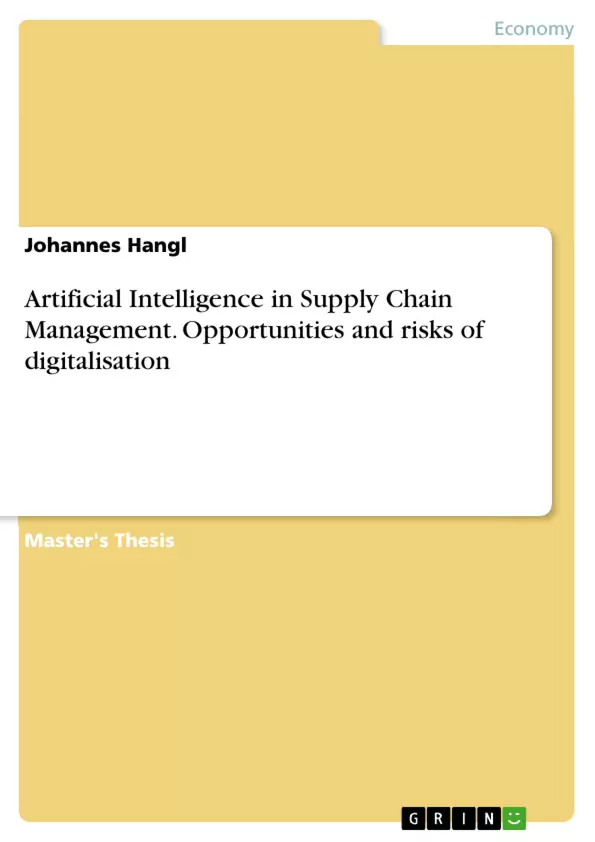Industrialisation has greatly changed people's lives since the eighteenth century. At that time, the focus of activities shifted from the physical to the cognitive. We are now in the fourth industrial revolution. Through the development of ever better artificial systems, more and more cognitive activities are being carried out by machines.
But what exactly does artificial intelligence mean? What changes has it already created in supply chain management and what is still possible in the future? What are the risks associated with advancing digitalisation?
In his publication, Johannes Hangl creates a comprehensive picture of the status of current and future developments as well as trends in the use of artificial intelligence. He shows what possibilities, effects, opportunities and risks it has for supply chain management.
From the contents:
- AI;
- Internet of Things;
- Logistics;
- Cyber-Physical Systems
Inhaltsverzeichnis (Table of Contents)
- 1 Introduction
- 1.1 Problem statement
- 1.2 Objective
- 1.3 Working methodology
- 1.4 Course of work
- 2 Theoretical foundations
- 2.1 Supply Chain Management
- 2.2 Artificial intelligence
- 3 Areas of application and current research on artificial intelligence in the supply chain
- 3.1 Process Overview Supply Chain
- 3.2 Procurement
- 3.3 Production
- 3.4 Intralogistics and warehousing
- 3.5 Distribution
- 3.6 Compliance, Customs, Import and Export
- 3.7 Disposal and recycling
- 4 Opportunities and risks of artificial intelligence in the supply chain
- 4.1 Odds
- 4.2 Risks
- 4.3 Summary of the use of artificial intelligence in the supply chain
Zielsetzung und Themenschwerpunkte (Objectives and Key Themes)
This work aims to explore the opportunities and risks of artificial intelligence (AI) in supply chain management. It examines the current state of AI applications in various stages of the supply chain, from procurement to disposal and recycling. The work also delves into the potential benefits and challenges associated with AI integration in a broader context.
- The role and impact of AI in modern supply chain management
- Opportunities and challenges presented by AI integration in supply chain processes
- Key areas of application for AI within the supply chain, including procurement, production, logistics, and distribution
- Ethical and societal considerations related to the deployment of AI in supply chain operations
- The potential future impact of AI on the supply chain and its implications for businesses and society
Zusammenfassung der Kapitel (Chapter Summaries)
The first chapter introduces the problem statement, outlining the growing significance of AI in the context of industrial revolutions and its potential impact on human activities. It also defines the objective, working methodology, and course of work for the study.
Chapter two provides a theoretical foundation for understanding the concepts of supply chain management and artificial intelligence. This chapter lays the groundwork for the subsequent analysis of AI applications within the supply chain.
Chapter three examines various areas of application for AI in the supply chain, including procurement, production, logistics, distribution, compliance, customs, and disposal and recycling. This chapter explores the current research and practical implementations of AI in these areas.
Schlüsselwörter (Keywords)
The primary keywords and focus topics include artificial intelligence, supply chain management, digitalization, opportunities, risks, automation, process optimization, data analytics, machine learning, deep learning, Internet of Things (IoT), and ethical considerations.
- Quote paper
- Johannes Hangl (Author), 2020, Artificial Intelligence in Supply Chain Management. Opportunities and risks of digitalisation, Munich, GRIN Verlag, https://www.grin.com/document/1187321



